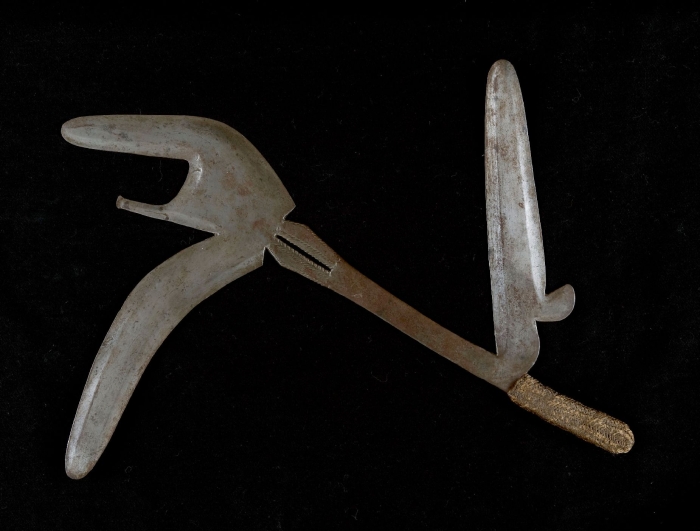Hunga Munga on:
[Wikipedia]
[Google]
[Amazon]
 A mambele is a form of hybrid knife/axe in central and southern Africa, originating from a curved throwing
A mambele is a form of hybrid knife/axe in central and southern Africa, originating from a curved throwing 
 The mambele consists of an
The mambele consists of an
Collection of mambeles
Belgium Blade weapons Throwing axes Axes African weapons Daggers {{DRCongo-stub
dagger
A dagger is a fighting knife with a very sharp point and usually two sharp edges, typically designed or capable of being used as a thrusting or stabbing weapon.State v. Martin, 633 S.W.2d 80 (Mo. 1982): This is the dictionary or popular-use de ...
used by the Mangbetu.
Description
 The mambele consists of an
The mambele consists of an iron
Iron () is a chemical element with Symbol (chemistry), symbol Fe (from la, Wikt:ferrum, ferrum) and atomic number 26. It is a metal that belongs to the first transition series and group 8 element, group 8 of the periodic table. It is, Abundanc ...
blade with a curved back section and rearward spike. It can be used in close combat as a hatchet or dagger, or more typically as a throwing weapon. It usually consists of four blades, three on top and one on the side. The curved hook was used to keep the weapon in the victim, and if pulled out, caused further damage. It would have been about 22 inches in length. These African iron weapons are thrown with a rotatory motion, and can inflict deep wounds with their projecting blades.
The mambele is also known as:
*hunga munga
*danisco by the Marghi
Margi, also known as Marghi and Marghi Central, is a Chadic language (a branch of Afroasiatic) spoken in Nigeria, Cameroon, and Chad. It is perhaps the best described of the Biu–Mandara branch of that family. Marghi South language and Putai ...
*goleyo by the Musgum
*njiga by the Bagirmi
*kpinga by the Zande. They were classed as "Court Metal", being produced under the patronage of the Avongara clan, distributed only to professional warriors, and considered status symbols. It was also part of the dowry
A dowry is a payment, such as property or money, paid by the bride's family to the groom or his family at the time of marriage. Dowry contrasts with the related concepts of bride price and dower. While bride price or bride service is a payment ...
that a man must pay to the bride's family. Soldiers would carry three or four into battle, hidden behind their shields. They were typically thrown at the enemy from 30 feet away.
They vary constantly in form and their use extends across Africa, from the Upper Nile on the east through Central Africa and over to Gabon
Gabon (; ; snq, Ngabu), officially the Gabonese Republic (french: République gabonaise), is a country on the west coast of Central Africa. Located on the equator, it is bordered by Equatorial Guinea to the northwest, Cameroon to the nort ...
in West Africa. In parts of Central Africa these weapons assume the form of a bird's head.
These knives reflect the culture of Africa before western colonisation
Colonization, or colonisation, constitutes large-scale population movements wherein migrants maintain strong links with their, or their ancestors', former country – by such links, gain advantage over other inhabitants of the territory. When ...
, both through their design and use. They can be symmetrical, bulbous, or even multi-pronged. Many are made of rarer and softer materials. These were harder to forge and were a status symbol to their owners.
See also
*Tomahawk
A tomahawk is a type of single-handed axe used by the many Indigenous peoples and nations of North America. It traditionally resembles a hatchet with a straight shaft. In pre-colonial times the head was made of stone, bone, or antler, and Eur ...
References
External links
* Poppe, Guido TCollection of mambeles
Belgium Blade weapons Throwing axes Axes African weapons Daggers {{DRCongo-stub